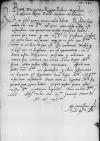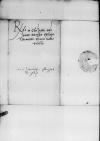Reverende in Christo Pater, sincere nobis dilecte.
Redditae sunt nobis cf. Ioannes DANTISCUS to Bona Sforza Heilsberg (Lidzbark Warmiński), 1540-12-22, CIDTC IDL 4⌊litteraecf. Ioannes DANTISCUS to Bona Sforza Heilsberg (Lidzbark Warmiński), 1540-12-22, CIDTC IDL 4⌋ Vestrae Paternitatis, ad quas, quia epistula nostra est responsiva, non oportet nos multa in praesens scribere, praeter hoc unum, quod nos, ea quae superinscribed⌈quaequae superinscribed⌉ Paternitati Vestrae scripsimus, scripsimus ex animo bono ac sincero atque ex eo zelo, quo Paternitatem Vestram in eo loco, in quo est, esse voluimus. Nihilque in his, quae ei scripsimus, nec ab aequanimitate, nec a decoro nostro defleximus, praesertim quod videamus, quod omnes fere actiones, quae coram sacra Sigismund I Jagiellon (Zygmunt I) (*1467 – †1548), King of Poland and Grand Duke of Lithuania (1506-1548); Duke of Głogów (Glogau) (1499-1506), Duke of Opava (1501-1506), Governor of Silesia (1504-1506); son of King Kazimierz IV Jagiellon and Elisabeth of Austria⌊regia maiestateSigismund I Jagiellon (Zygmunt I) (*1467 – †1548), King of Poland and Grand Duke of Lithuania (1506-1548); Duke of Głogów (Glogau) (1499-1506), Duke of Opava (1501-1506), Governor of Silesia (1504-1506); son of King Kazimierz IV Jagiellon and Elisabeth of Austria⌋ fiunt, aliter postea istic invertantur. Offendi non debet Vestra Paternitas nec succensere, quod illam submonemus, ut honorem et dignitatem sacrae Sigismund I Jagiellon (Zygmunt I) (*1467 – †1548), King of Poland and Grand Duke of Lithuania (1506-1548); Duke of Głogów (Glogau) (1499-1506), Duke of Opava (1501-1506), Governor of Silesia (1504-1506); son of King Kazimierz IV Jagiellon and Elisabeth of Austria⌊regiae maiestatisSigismund I Jagiellon (Zygmunt I) (*1467 – †1548), King of Poland and Grand Duke of Lithuania (1506-1548); Duke of Głogów (Glogau) (1499-1506), Duke of Opava (1501-1506), Governor of Silesia (1504-1506); son of King Kazimierz IV Jagiellon and Elisabeth of Austria⌋ Vestra Paternitas in suo loco custodiret. Honor etenim ac dignitas Sigismund I Jagiellon (Zygmunt I) (*1467 – †1548), King of Poland and Grand Duke of Lithuania (1506-1548); Duke of Głogów (Glogau) (1499-1506), Duke of Opava (1501-1506), Governor of Silesia (1504-1506); son of King Kazimierz IV Jagiellon and Elisabeth of Austria⌊maiestatis suaeSigismund I Jagiellon (Zygmunt I) (*1467 – †1548), King of Poland and Grand Duke of Lithuania (1506-1548); Duke of Głogów (Glogau) (1499-1506), Duke of Opava (1501-1506), Governor of Silesia (1504-1506); son of King Kazimierz IV Jagiellon and Elisabeth of Austria⌋ praeponi ante omnia debet, ex quo postea honor ipsius Vestrae Paternitatis et aliorum dependet.
Bene valeat Paternitas Vestra.


 BCz, 1601, p. 680
BCz, 1601, p. 680